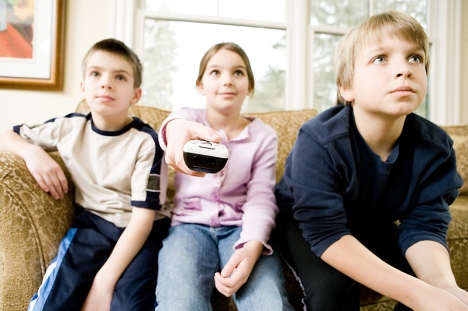

Talking about “Fat Haters:” Dr. Robyn Silverman, body image expert, on The Tyra Show!
It was just last Tuesday that I was asked to come down to New York City to be the Body Image Expert for a taping of the nationally syndicated talk show, The Tyra Show, with, of course, Tyra Banks. The show will air October 5th so be sure to watch or Tivo Tyra on that day (4pm EST on the CW)!
The topic: Fat Haters and the family members and friends who they hurt with their attitudes.
It’s hard enough for women to deal with the images they see each day—from what they see in the media to what they “see” reflected in the mirror. Girls and women compare themselves to impossible standards of thinness so that…what? I’m not quite sure. What I call “striving for zero” (that “ideal” dress size or that “ideal weight) makes us feel inadequate and unworthy. And this is normal. Thank goodness we all have a place to go home to where all that stuff doesn’t matter and we can remind ourselves that we are amazing TODAY- not 5 pounds from now.
But what is it like for those girls and women who don’t have a safe haven among their family and friends—a place where weight and looks and size don’t matter and they are loved and valued for who they are? A place where beauty has a wider definition and a clothing size doesn’t depict more worth as it delves deeper into the zeros? Those girls and women are suffering. They have no buffer. They begin to buy into the notion that the more they weigh, the less they are worth. And what’s worse, they pass body bashing on, generation after generation.
So, that’s what we were all talking about on The Tyra Show. I was asked about why some girls lash out in the ugly ways depicted on the show (you won’t believe some of the things said) and other related questions about double standards and body image. It was exciting to be a part of The Tyra Show and I’m glad I can share this topic with you, which, as you know, is near and dear to my heart. After all, I’m writing a whole book on it (due out October 2010!).
Looking forward to hearing what you have to say about the show. There isn’t any crazy chair throwing—don’t worry- I think there are some important stories and opinions uncovered. So watch The Tyra Show with me—Monday, October 5th, at 4pm EST on the CW. See you there!

Filed under: Body Image, Media, Parenting tips | Tagged: Body Image, Dr. Robyn Silverman, Fat Haters, The Tyra Show | Leave a comment »




 Diet Doping: Getting Thin at any Cost
Diet Doping: Getting Thin at any Cost












